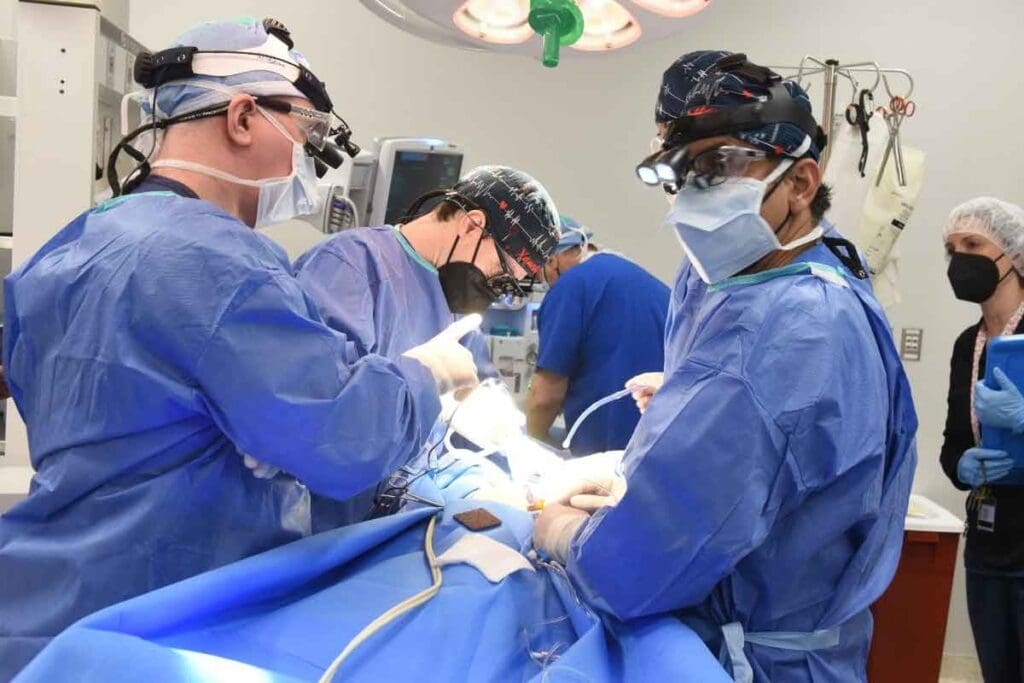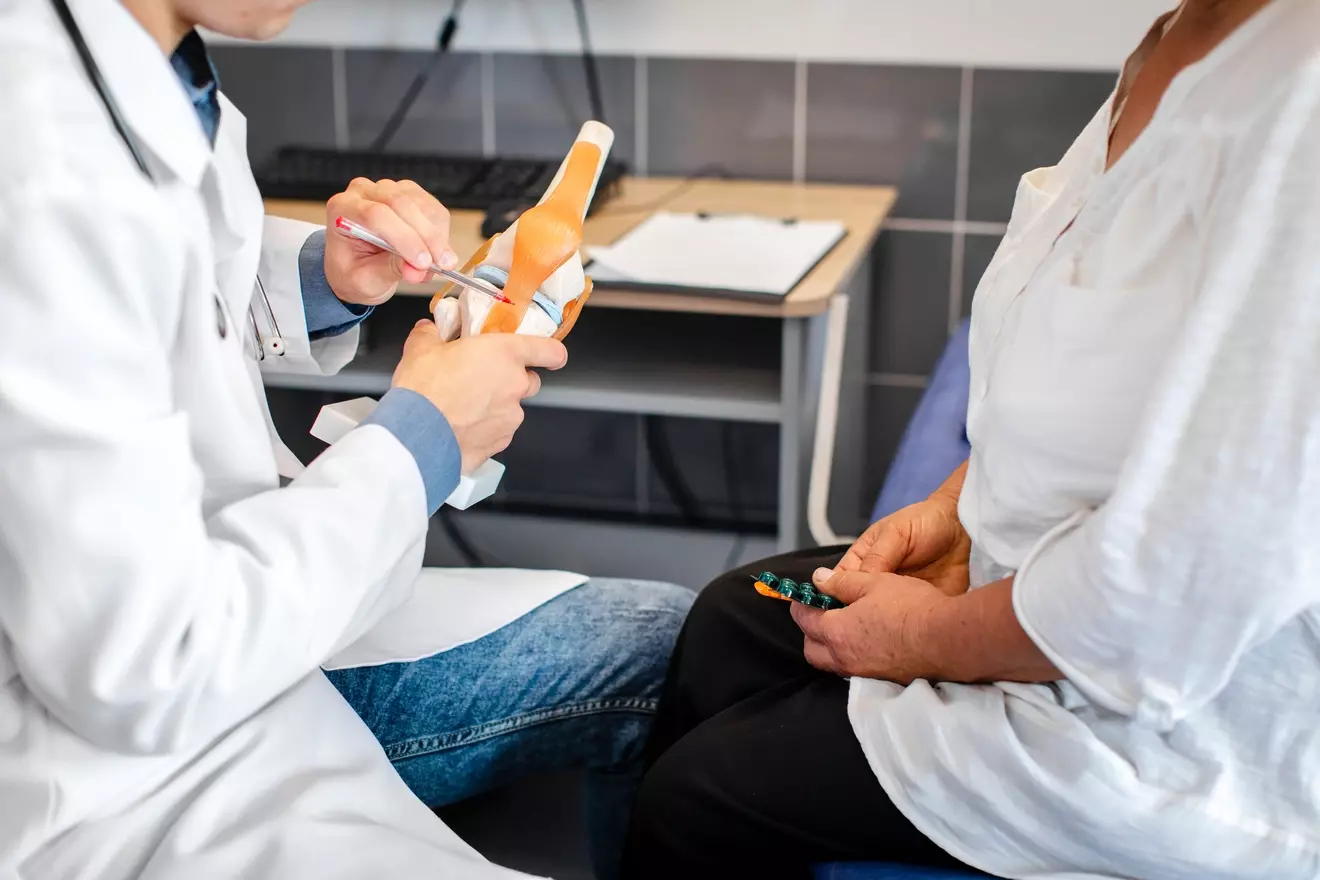Last Updated on November 26, 2025 by Bilal Hasdemir

When lives depend on rapid intervention for heart blockages, patients around the world trust advanced techniques like coronary artery balloon angioplasty. We understand the importance of safe, patient-centered care, ensuring access to state-of-the-art treatment when it matters most.
At Liv Hospital, we are dedicated to providing comprehensive care for heart conditions. Balloon angioplasty is a minimally invasive procedure that involves inflating a small balloon inside narrowed coronary arteries to restore blood flow. This technique is crucial in treating heart blockages and is often performed during or after a heart attack.
By using a tiny balloon to gently push plaque against the artery walls, we can create more space inside the artery, allowing blood to flow freely again. This procedure is a key component of interventional cardiology, offering a lifeline to patients at risk of heart attack.
Key Takeaways
- Coronary artery balloon angioplasty is a minimally invasive procedure to treat heart blockages.
- The procedure involves inflating a small balloon inside narrowed coronary arteries.
- Balloon angioplasty is often performed during or after a heart attack.
- It helps restore blood flow by pushing plaque against the artery walls.
- This technique is a crucial component of interventional cardiology.
Understanding Coronary Artery Disease and Blockages

Coronary artery disease occurs when the arteries that supply blood to the heart muscle become constricted or blocked. This condition is a leading cause of morbidity and mortality worldwide. We will explore how these blockages occur and the symptoms that indicate their presence.
How Coronary Arteries Become Blocked
The coronary arteries can become blocked due to the accumulation of plaque, a mixture of fat, cholesterol, and other substances. This process, known as atherosclerosis, can start early in life and progress over time. Plaque buildup can be exacerbated by factors such as high blood pressure, smoking, and a diet high in saturated fats.
As plaque accumulates, it can cause the coronary arteries to narrow, reducing blood flow to the heart. If the plaque ruptures, it can lead to the formation of a blood clot, which can completely block the artery, resulting in a heart attack.
Symptoms and Diagnosis of Coronary Artery Disease
The symptoms of coronary artery disease can vary, but they often include chest pain (angina), shortness of breath, and fatigue. These symptoms occur because the heart muscle is not receiving enough oxygen-rich blood.
Diagnosing coronary artery disease involves several tests, including electrocardiograms (ECG), stress tests, and coronary angiography. These tests help determine the extent of blockage and guide treatment decisions.
| Diagnostic Test | Purpose |
| Electrocardiogram (ECG) | Measures the heart’s electrical activity |
| Stress Test | Evaluates heart function under stress |
| Coronary Angiography | Visualizes the coronary arteries and blockages |
Understanding coronary artery disease and its blockages is crucial for effective management and treatment. By recognizing the symptoms and using appropriate diagnostic tests, healthcare providers can develop targeted treatment plans, including procedures like balloon angioplasty, to restore blood flow to the heart.
Coronary Artery Balloon Angioplasty Explained

Coronary artery balloon angioplasty, also known as percutaneous coronary intervention (PCI), is a lifesaving procedure for many patients with heart disease. This minimally invasive treatment is used to widen blocked or narrowed coronary arteries, improving blood flow to the heart.
Definition and Purpose
Angioplasty is defined as a medical procedure that uses a balloon to expand the coronary arteries, thereby relieving blockages caused by coronary artery disease. The primary purpose of this procedure is to restore normal blood flow to the heart muscle, reducing symptoms such as chest pain (angina) and shortness of breath, and preventing heart attacks.
The procedure involves using a catheter (a thin, flexible tube) with a balloon at its tip. When the catheter is positioned at the blockage, the balloon is inflated, compressing the plaque against the artery walls and widening the artery. This allows for improved blood flow, ensuring that the heart receives the oxygen and nutrients it needs.
Historical Development of Angioplasty
The concept of angioplasty was first introduced in the late 1970s byA famous cardiologist. The first successful coronary angioplasty was performed in 1977, marking a significant milestone in interventional cardiology. Since then, the technique has evolved substantially, with advancements in technology leading to the development of more sophisticated catheters, balloons, and additional tools like stents.
Over the years, angioplasty has become increasingly safe and effective, with a significant reduction in complications and improved patient outcomes. The integration of new technologies and techniques has expanded the scope of angioplasty, making it a viable treatment option for a broader range of patients.
Global Prevalence and Impact
Today, coronary artery balloon angioplasty is performed over 2 million times annually worldwide, making it one of the most common interventional cardiology procedures. The global prevalence of angioplasty reflects its importance in managing coronary artery disease, a leading cause of morbidity and mortality worldwide.
The impact of angioplasty extends beyond just the numbers. For many patients, the procedure means the difference between a life limited by angina and one with restored vitality and independence. By improving blood flow to the heart, angioplasty can significantly enhance a patient’s quality of life, enabling them to engage in activities they enjoy without the constraints of heart disease.
Some key benefits of angioplasty include:
- Minimally invasive, reducing recovery time
- Effective in relieving symptoms and improving heart function
- Can be performed in emergencies, such as during a heart attack
- Often used in conjunction with stenting to keep arteries open
As medical technology continues to advance, we can expect further improvements in angioplasty techniques and outcomes, offering new hope to patients with coronary artery disease.
The Mechanics of Balloon Angioplasty Procedure
Understanding the mechanics of balloon angioplasty is essential for patients who are considering this lifesaving procedure. We will walk you through the preparation, the step-by-step process, and the technology involved in this critical treatment for coronary artery disease.
Preparation for the Procedure
Before undergoing balloon angioplasty, patients typically undergo a series of tests to assess their overall heart health. These tests may include an electrocardiogram (ECG), stress test, and coronary angiogram. Our medical team reviews these test results to plan the most effective treatment strategy.
On the day of the procedure, patients are given medication to help them relax. The angioplasty is usually performed under local anesthesia, meaning the patient remains awake but the area where the catheter is inserted is numbed.
Step-by-Step Process
The balloon angioplasty procedure involves several key steps:
- A small incision is made in the wrist or groin to access an artery.
- A catheter with a deflated balloon is guided through the artery to the blocked coronary artery.
- Once in position, the balloon is inflated, compressing the plaque against the artery walls and widening the artery.
- Often, a stent is placed during the procedure to keep the artery open.
- The balloon is deflated and removed, leaving the stent in place.
Types of Balloons and Catheters Used
The angioplasty balloon is a critical component of the procedure. There are various types of balloons designed for different purposes, including:
- Standard balloons for general use.
- Cutting balloons for treating particularly stubborn blockages.
- Drug-eluting balloons that release medication to prevent re-narrowing.
The choice of balloon and catheter depends on the patient’s specific condition and the complexity of the blockage. Our experienced cardiologists select the most appropriate equipment to ensure the best outcomes.
By understanding the mechanics of balloon angioplasty, patients can better appreciate the care and precision that goes into their treatment. This knowledge also helps in managing expectations and recovery post-procedure.
When Is Balloon Angioplasty Recommended?
Balloon angioplasty is a versatile procedure that is used both as an emergency treatment during heart attacks and as a planned intervention for chronic coronary artery disease. This flexibility makes it a valuable tool in cardiology, allowing for tailored treatment approaches based on the patient’s condition.
Emergency Treatment During Heart Attacks
During a heart attack, timely intervention is crucial to minimize damage to the heart muscle. Heart attack balloon angioplasty is often recommended as an emergency treatment to restore blood flow to the affected area of the heart. This procedure involves using a balloon to open up the blocked coronary artery, thereby reducing the risk of further damage.
The benefits of emergency balloon angioplasty during a heart attack include:
- Restoration of blood flow to the heart muscle
- Reduction in the size of the infarct (damaged heart tissue)
- Improved survival rates
- Minimized risk of complications
Planned Procedure for Chronic Coronary Artery Disease
For patients with chronic coronary artery disease, balloon angioplasty is often recommended as a planned procedure to alleviate symptoms and improve quality of life. The goal is to open up narrowed or blocked coronary arteries, thereby enhancing blood flow to the heart.
The table below summarizes the key differences between emergency and planned balloon angioplasty procedures:
| Characteristics | Emergency Procedure | Planned Procedure |
| Clinical Context | Acute heart attack | Chronic coronary artery disease |
| Urgency | Immediate intervention required | Scheduled in advance |
| Primary Goal | Restore blood flow, minimize damage | Relieve symptoms, improve quality of life |
By understanding when balloon angioplasty is recommended, patients and healthcare providers can make informed decisions about the most appropriate treatment strategy.
Balloon Angioplasty vs. Other Heart Treatments
Understanding the differences between balloon angioplasty and other treatments is crucial for patients with coronary artery disease. We will explore how balloon angioplasty compares with medication therapy, Coronary Artery Bypass Grafting (CABG), and other interventional procedures.
Comparison with Medication Therapy
Medication therapy is often the first line of treatment for coronary artery disease. It involves managing symptoms and slowing disease progression through medications. However, when medication alone is insufficient, balloon angioplasty can be considered to directly address blockages.
Key differences: Medication therapy is non-invasive and focuses on managing symptoms, whereas balloon angioplasty is a minimally invasive procedure that directly opens blocked arteries.
Comparison with Coronary Artery Bypass Grafting (CABG)
CABG is a surgical procedure that involves bypassing blocked sections of coronary arteries with grafts. While effective, it’s more invasive than balloon angioplasty and typically reserved for complex cases or when multiple blockages are present.
Key differences: CABG is more invasive and involves a longer recovery period compared to balloon angioplasty. However, CABG can be more suitable for patients with multiple or complex blockages.
Comparison with Other Interventional Procedures
Other interventional procedures include atherectomy and the use of stents. Atherectomy involves removing plaque from the arteries, while stents are small mesh tubes that keep arteries open. Balloon angioplasty can be used in conjunction with these procedures.
| Treatment | Invasiveness | Recovery Time | Suitability |
| Balloon Angioplasty | Minimally Invasive | Short | Single or few blockages |
| Medication Therapy | Non-Invasive | N/A | Managing symptoms |
| CABG | Invasive | Long | Multiple or complex blockages |
| Atherectomy/Stents | Minimally Invasive | Short | Specific plaque removal or keeping arteries open |
Each treatment has its place in managing coronary artery disease. The choice between balloon angioplasty and other treatments depends on the individual patient’s condition, the severity of the disease, and other health factors.
Advancements in Balloon Cardiology
Advancements in balloon cardiology have revolutionized the treatment of coronary artery disease. The field has seen significant innovations, improving both the efficacy and safety of angioplasty procedures.
Integration of Stents with Balloon Angioplasty
The integration of stents with balloon angioplasty has been a breakthrough. Stents are small, mesh-like tubes that are placed in the artery to keep it open after the balloon has widened it. This combined approach has significantly improved patient outcomes by reducing the risk of the artery narrowing again.
Key benefits of stent integration include:
- Reduced risk of artery re-narrowing
- Improved long-term patency rates
- Enhanced patient recovery
Drug-Eluting Balloons and Their Benefits
Drug-eluting balloons represent another significant advancement. These balloons are coated with medication that is released into the artery wall as the balloon inflates, helping to prevent the artery from becoming blocked again.
The benefits of drug-eluting balloons include:
- Reduced need for stenting
- Lower risk of restenosis
- Potential reduction in the need for long-term antiplatelet therapy
Cutting-Edge Technologies in Interventional Cardiology
The field of interventional cardiology continues to evolve with cutting-edge technologies. Innovations such as bioabsorbable stents and advanced imaging techniques are improving the precision and outcomes of angioplasty procedures.
These advancements are not only enhancing the safety and efficacy of balloon angioplasty but are also expanding the possibilities for treating complex coronary artery disease. As we continue to push the boundaries of what is possible in interventional cardiology, patient care and outcomes are likely to improve significantly.
Benefits and Success Rates of Heart Attack Balloon Angioplasty
Heart attack balloon angioplasty has revolutionized the treatment of coronary artery disease, offering patients a minimally invasive solution to restore blood flow to the heart. This procedure has become a cornerstone in the management of acute myocardial infarction, providing immediate and long-term benefits for patients.
Immediate and Long-term Benefits
The immediate benefits of heart attack balloon angioplasty include the rapid restoration of blood flow to the heart muscle, reducing the extent of cardiac damage. According to a study published in the Journal of the American College of Cardiology, “Primary percutaneous coronary intervention (PCI), including balloon angioplasty, is the preferred treatment for acute myocardial infarction, associated with improved survival and reduced morbidity.” Long-term benefits include improved heart function, reduced symptoms of angina, and enhanced overall quality of life.
As a renowned cardiologist, notes, “The integration of balloon angioplasty with stenting has significantly improved outcomes for patients with coronary artery disease.” This is supported by numerous clinical trials demonstrating the efficacy of balloon angioplasty in maintaining vessel patency and preventing future cardiac events.
Statistical Success Rates and Outcomes
Statistical data indicate that heart attack balloon angioplasty has a high success rate, with procedural success achieved in over 90% of cases. The procedural success rate is defined as the restoration of blood flow without major complications. Long-term follow-up studies have shown that the majority of patients remain free from major adverse cardiac events, with some studies reporting rates as low as 10% over five years.
“The use of balloon angioplasty in the setting of acute myocardial infarction is highly effective in restoring blood flow and improving patient outcomes.” –
AHA Journal
Quality of Life Improvements
Heart attack balloon angioplasty significantly improves patients’ quality of life by reducing symptoms, enhancing physical function, and allowing a quicker return to normal activities. Patients often report improved exercise tolerance and a reduction in angina symptoms, contributing to an overall better quality of life.
We observe that the combination of immediate and long-term benefits, along with high statistical success rates, makes heart attack balloon angioplasty a valuable treatment option for patients with coronary artery disease. By understanding the benefits and outcomes of this procedure, patients and healthcare providers can make informed decisions about its use in managing heart health.
Potential Risks and Complications
Understanding the risks associated with balloon angioplasty is essential for patients considering this treatment for coronary artery disease. While the procedure is generally safe and effective, there are potential complications that can arise.
Common Side Effects and Minor Complications
Most patients undergo balloon angioplasty without major issues, but some may experience common side effects such as bruising or bleeding at the catheter site, pain or discomfort during the recovery, and temporary changes in heart rhythm. These side effects are typically minor and resolve on their own.
Minor complications can include allergic reactions to the dye used during the procedure, damage to the blood vessels, and restenosis, or the re-narrowing of the arteries. While these complications are more serious than side effects, they are still relatively rare.
Serious Complications and Their Management
Though rare, serious complications can occur during or after balloon angioplasty. These include heart attack, stroke, or even death, although these outcomes are extremely uncommon. Cardiac tamponade, a condition where fluid accumulates in the sac around the heart, is another serious but rare complication.
To manage these risks, medical teams closely monitor patients during and after the procedure. In the event of a complication, prompt intervention can significantly improve outcomes. For instance, if a patient experiences a severe allergic reaction, administering appropriate medication can mitigate the reaction.
Risk Factors for Complications
Certain factors can increase the risk of complications during or after balloon angioplasty. These include the patient’s overall health, the presence of other medical conditions such as diabetes or kidney disease, and the severity of the coronary artery disease being treated.
Understanding these risk factors allows healthcare providers to take necessary precautions and tailor the treatment plan to the individual patient’s needs, thereby minimizing the risk of complications.
By being aware of the potential risks and complications associated with balloon angioplasty, patients can make informed decisions about their treatment. It’s a balance between the benefits of the procedure and the potential risks, guided by professional medical advice.
Recovery and Post-Procedure Care
Recovery after balloon angioplasty is a multifaceted process that requires careful monitoring and lifestyle adjustments. As we guide you through this critical phase, it’s essential to understand the steps involved in ensuring a smooth and successful recovery.
Hospital Stay and Immediate Recovery
After the angioplasty procedure, patients typically spend a short period in the hospital for observation. This allows healthcare professionals to monitor for any immediate complications and manage any discomfort or pain. During this time, we also provide instructions on post-procedure care and answer any questions you may have.
The initial recovery period at home involves resting and avoiding strenuous activities. It’s crucial to follow the specific guidelines provided by your healthcare team regarding physical activity, medication, and wound care. Most patients can resume their normal activities within a few days to a week after the procedure.
Lifestyle Changes After Angioplasty
Making healthy lifestyle changes is a vital part of the recovery process after heart ballooning. This includes adopting a heart-healthy diet, engaging in regular physical activity, quitting smoking, and managing stress. These changes not only support the success of the angioplasty but also contribute to overall cardiovascular health.
We recommend working with a healthcare provider or a nutritionist to develop a personalized diet plan that is rich in fruits, vegetables, whole grains, and lean proteins. Regular physical activity, such as walking, should be gradually increased as advised by your healthcare team.
Follow-up Care and Monitoring
Follow-up care is essential after angiopalsty to monitor the success of the procedure and manage any potential complications early. This typically involves a series of follow-up appointments with your cardiologist, who will assess your heart health and adjust treatments as necessary.
During these visits, we also discuss any symptoms or concerns you may have, such as chest pain or shortness of breath. It’s crucial to report any unusual symptoms promptly to your healthcare provider. By closely monitoring your condition and making necessary adjustments, we can help ensure the long-term success of your balloon for heart procedure.
By understanding and adhering to the recovery and post-procedure care guidelines, you can significantly improve your outcomes after angioplasty. We are committed to supporting you every step of the way through this journey.
Conclusion
Coronary artery balloon angioplasty has revolutionized the treatment of heart blockages, offering a minimally invasive solution for patients with coronary artery disease. By understanding the mechanics of balloon angioplasty and its benefits, we can appreciate its significance in modern cardiology.
The procedure involves using a balloon catheter to widen narrowed or blocked coronary arteries, restoring blood flow to the heart. In many cases, angioplasty is performed during a heart attack to quickly restore blood flow and minimize damage. The integration of stents with balloon angioplasty has further improved outcomes, reducing the risk of restenosis.
Balloon angioplasty has become a crucial tool in managing coronary artery disease, offering a safe and effective treatment option for patients. As advancements continue in interventional cardiology, we can expect to see improved outcomes and quality of life for patients undergoing heart attack balloon angioplasty and other forms of coronary artery balloon angioplasty.
FAQ
What is coronary artery balloon angioplasty?
Coronary artery balloon angioplasty, also known as percutaneous transluminal coronary angioplasty (PTCA), is a minimally invasive procedure used to widen narrowed or obstructed coronary arteries. The goal is to restore blood flow to the heart, reducing symptoms of coronary artery disease.
How does balloon angioplasty treat heart blockages?
During the procedure, a catheter with a balloon is guided to the blocked coronary artery. The balloon is then inflated, compressing the plaque and widening the artery. This improves blood flow to the heart muscle, alleviating symptoms such as chest pain.
What are the benefits of balloon angioplasty?
The benefits include improved blood flow to the heart, reduced symptoms of coronary artery disease, and a minimally invasive alternative to surgical bypass grafting. It can also be performed in emergencies, such as during a heart attack.
What is the difference between balloon angioplasty and angioplasty with stenting?
Balloon angioplasty involves inflating a balloon to widen the artery, while angioplasty with stenting involves placing a small mesh stent to keep the artery open after the balloon angioplasty. Stenting is often performed in conjunction with balloon angioplasty to reduce the risk of the artery narrowing again.
Is balloon angioplasty a painful procedure?
The procedure is typically performed under local anesthesia, so patients may feel some discomfort but not pain. After the procedure, some patients may experience mild discomfort or soreness at the catheter site.
How long does it take to recover from balloon angioplasty?
Recovery time varies, but most patients can resume normal activities within a few days to a week. Hospital stay is usually short, often just overnight. Full recovery and return to strenuous activities may take a few weeks.
What are the risks and complications of balloon angioplasty?
Potential risks include bleeding, infection, damage to the blood vessel, and reaction to the contrast dye. Serious complications, such as heart attack or stroke, are rare but can occur.
Can balloon angioplasty be used during a heart attack?
Yes, balloon angioplasty is often performed as an emergency treatment during a heart attack to quickly restore blood flow to the heart muscle, reducing damage.
How is balloon angioplasty different from coronary artery bypass grafting (CABG)?
Balloon angioplasty is a minimally invasive procedure that widens the artery from the inside, while CABG involves surgically bypassing the blocked section of the artery using a graft. CABG is typically recommended for more complex or multi-vessel disease.
What lifestyle changes are recommended after balloon angioplasty?
Patients are advised to adopt a heart-healthy lifestyle, including a balanced diet, regular exercise, quitting smoking, and managing stress. Medications may also be prescribed to control conditions like high blood pressure, high cholesterol, or diabetes.
What is androplasty or angioplasty?
Angioplasty refers to the procedure of using a balloon to widen a narrowed or blocked blood vessel. The term “androplasty” is not a standard medical term related to this procedure.
What is the balloon used in heart procedures called?
The balloon used in coronary artery balloon angioplasty is typically referred to as an angioplasty balloon. It is a specialized balloon catheter designed to dilate narrowed or obstructed coronary arteries.
References
- Picard, F., & Feldman, T. (2022). From balloon angioplasty to recent innovations to future perspectives. Cardiovascular Diagnosis and Therapy. Retrieved October 21, 2025, from https://pubmed.ncbi.nlm.nih.gov/35777682/






